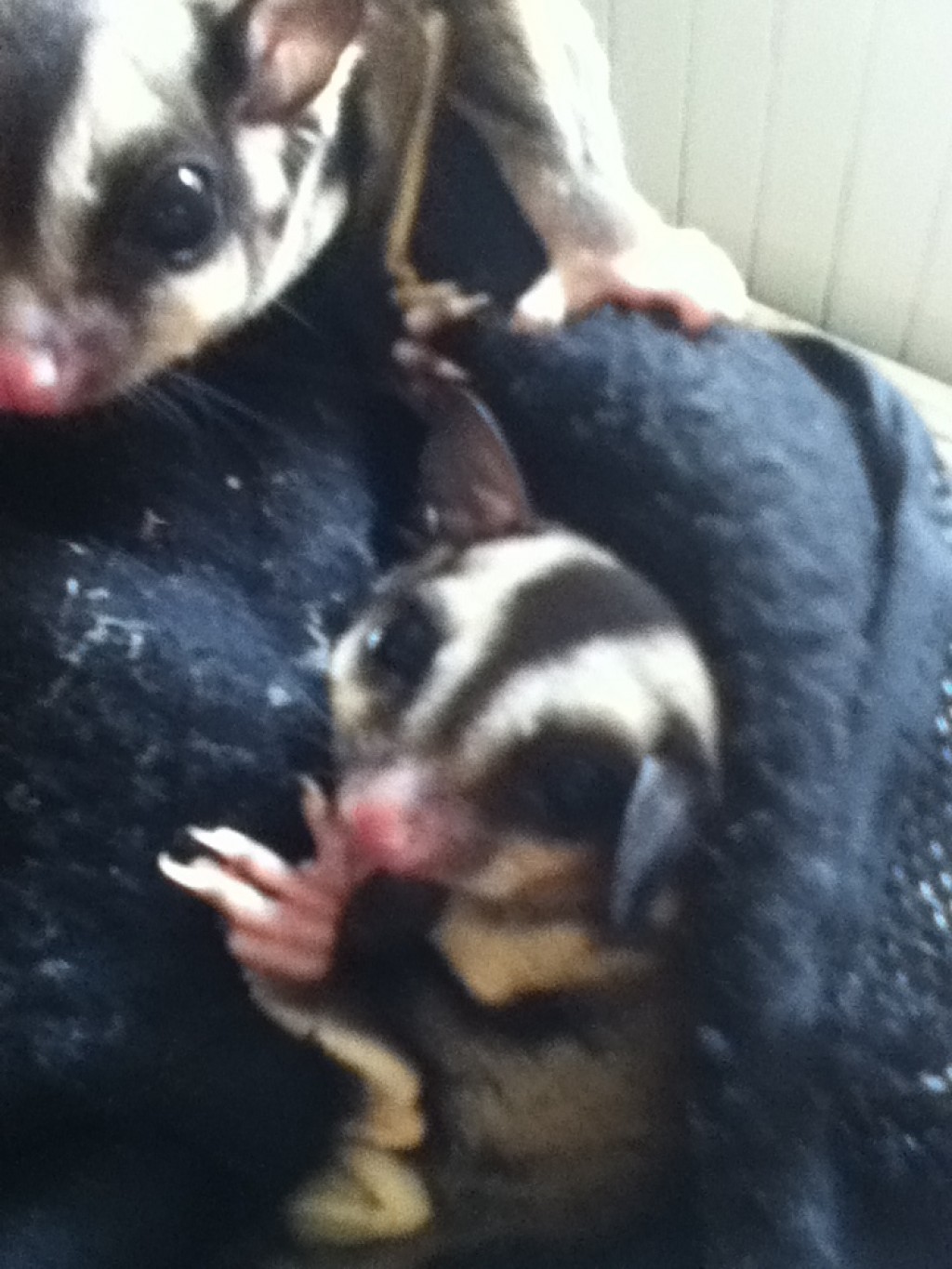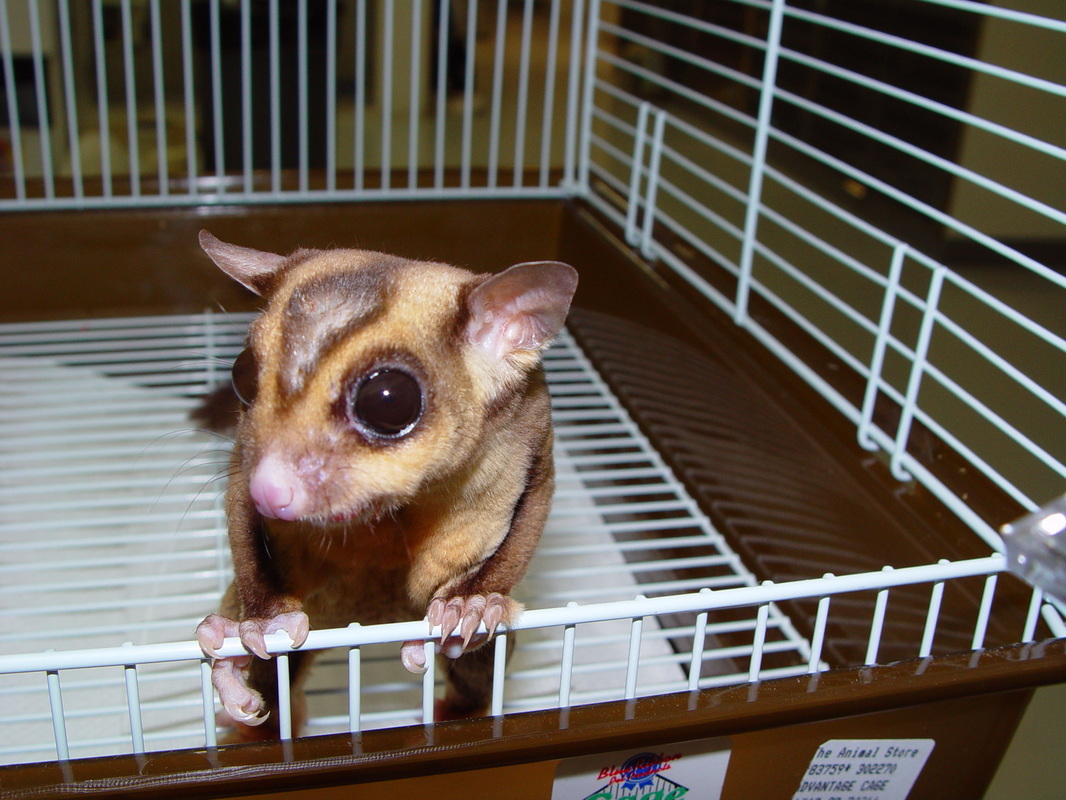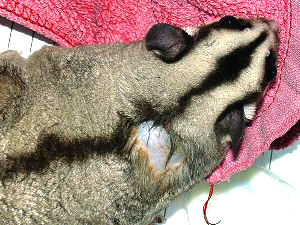
Should the enclosure be made from mesh, it should be no wider than 1.25-2.5cm to prevent injury and escapes. Their eyes are large, protruding, and widely spaced giving them a large field of vision well adapted to seeing at night.Įnclosures should be as large as possible, sources state a minimum of 2m wide by 2m long and at least 1.8m high, but a larger enclosure is always better. They have a thin gliding membrane called the patagium that extends from the fifth digit of the forepaws to their ankles, and their tail is somewhat prehensile which helps them move safely and effectively around their home environment. They belong to the family Petauridae which translates to ‘wrist-winged gliders. Sugar gliders are able to glide (up to 50m) as their name suggests. Their anatomy has evolved to be perfectly adapted to their native environment. They are a social, nocturnal and arboreal species.

They have a range of habitats that are primarily forests in either tropical, coastal, or dry inland sclerophyll tropical. Sugar gliders are marsupials native to Australia and New Guinea. They have an average lifespan of 7 years. Given their extreme husbandry requirements and frequent cases of neglect seen in captivity, keeping them in captivity should be discouraged. They're highly social mammals and it can often be found living in groups of up to 10 in the wild. They're nocturnal, and their omnivorous diet is incredibly challenging to replicate in captivity (we will touch on that later). T he sugar glider is commonly found throughout mainland Australia, New Guinea, Tasmania, and other local areas. In fact, sugar gliders closer to Kangaroos - and, like most marsupials, carry their young within a pouch. Marsupials are not rodents, not even close. Sugar gliders are undeniably an absolutely adorable gliding marsupial. You must be well educated before committing to a pet sugar glider as many of the most common health issues seen in captivity are the result of poor husbandry. This is partly due to a lack of education as well as a lack of research surrounding proper husbandry. Many of your questions will be answered in our policies. We've noticed that sugar gliders are an exotic animal with so many misconceptions and misinformation surrounding their care. Please read our Purchase Terms before asking us any questions. Sugar glider colors and markings may change as they grow. “Ready by” dates are only approximations and may not be guaranteed, as the animal must be a healthy weight and thriving independent of its parents before going to their new home. Dragonstone Ranch does not guarantee the health or condition of a purchased animal once it leaves our care. Please note that animal transport is at the buyer’s risk. Click here for current transport cost estimates. TRANSPORT: We can offer to arrange nationwide transport options within the continental United States with a third-party transport company.
#Sugar glider care full
A No Breeding Contract will apply for all females purchased as a Pet.īREEDING RIGHTS: Breeders, please contact us for Breeding Rights pricing, which includes full lineage and breeding rights contract. Pet males must be paid for in full at least 24 hours prior to scheduled neuter, and that payment will be nonrefundable. All vet fees associated with the neuter are included in the Pet Pricing.

PET PRICING: Pet males will be neutered before going to their new homes. They are colony animals, and putting them in solitary confinement throughout every night of their lives can result in them getting depressed. Sugar gliders are nocturnal, so even if you promise to give them plenty of attention all day, you would be depriving them of a companion to run around, groom, and play with at night when they are awake. While they can survive alone, they thrive in pairs or more. Therefore, we will not sell a single glider to anyone that does not already have a glider in their care or one coming soon.

PURCHASING 2 OR MORE: Our animals’ best interests are our priority.


 0 kommentar(er)
0 kommentar(er)
